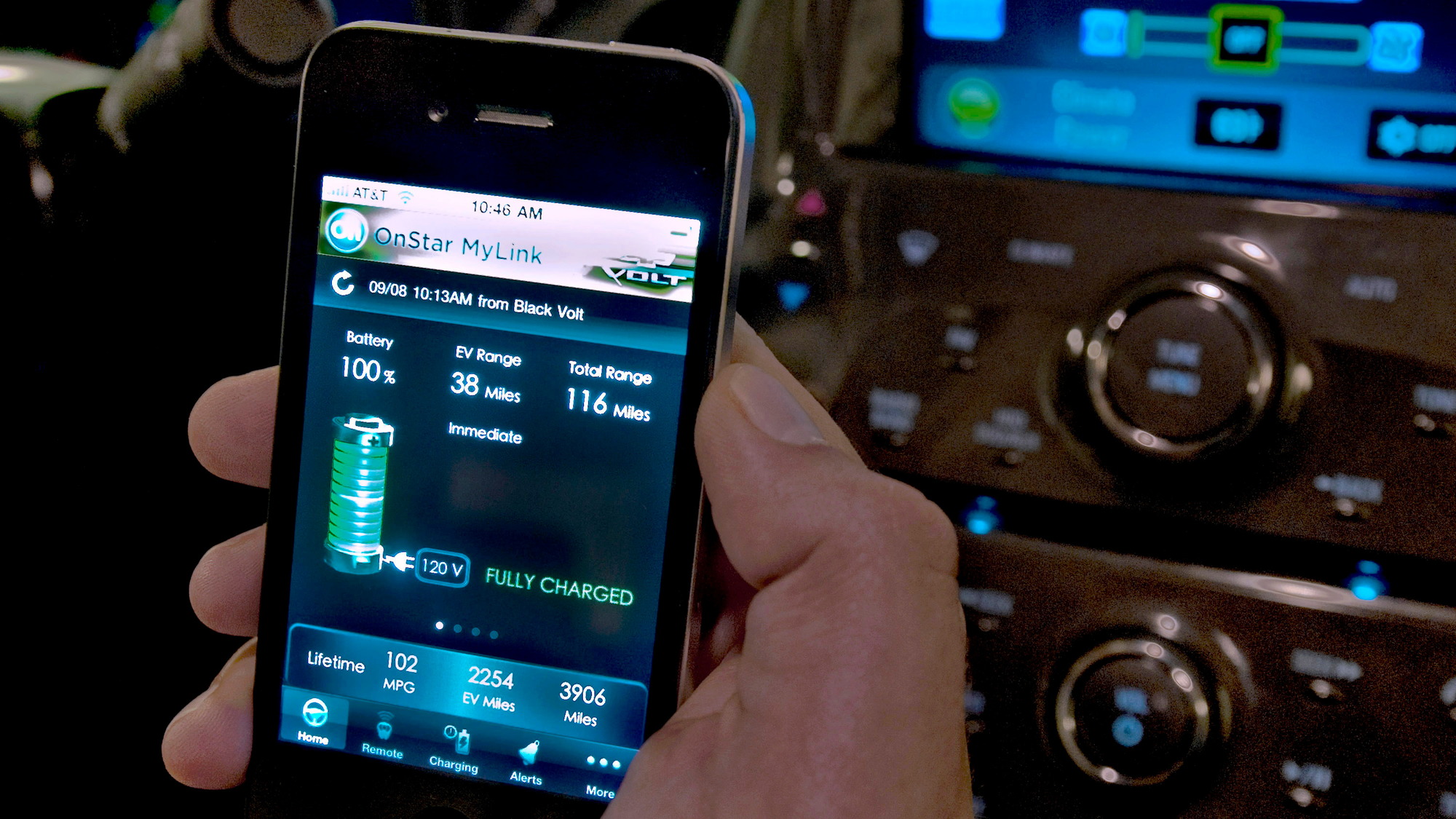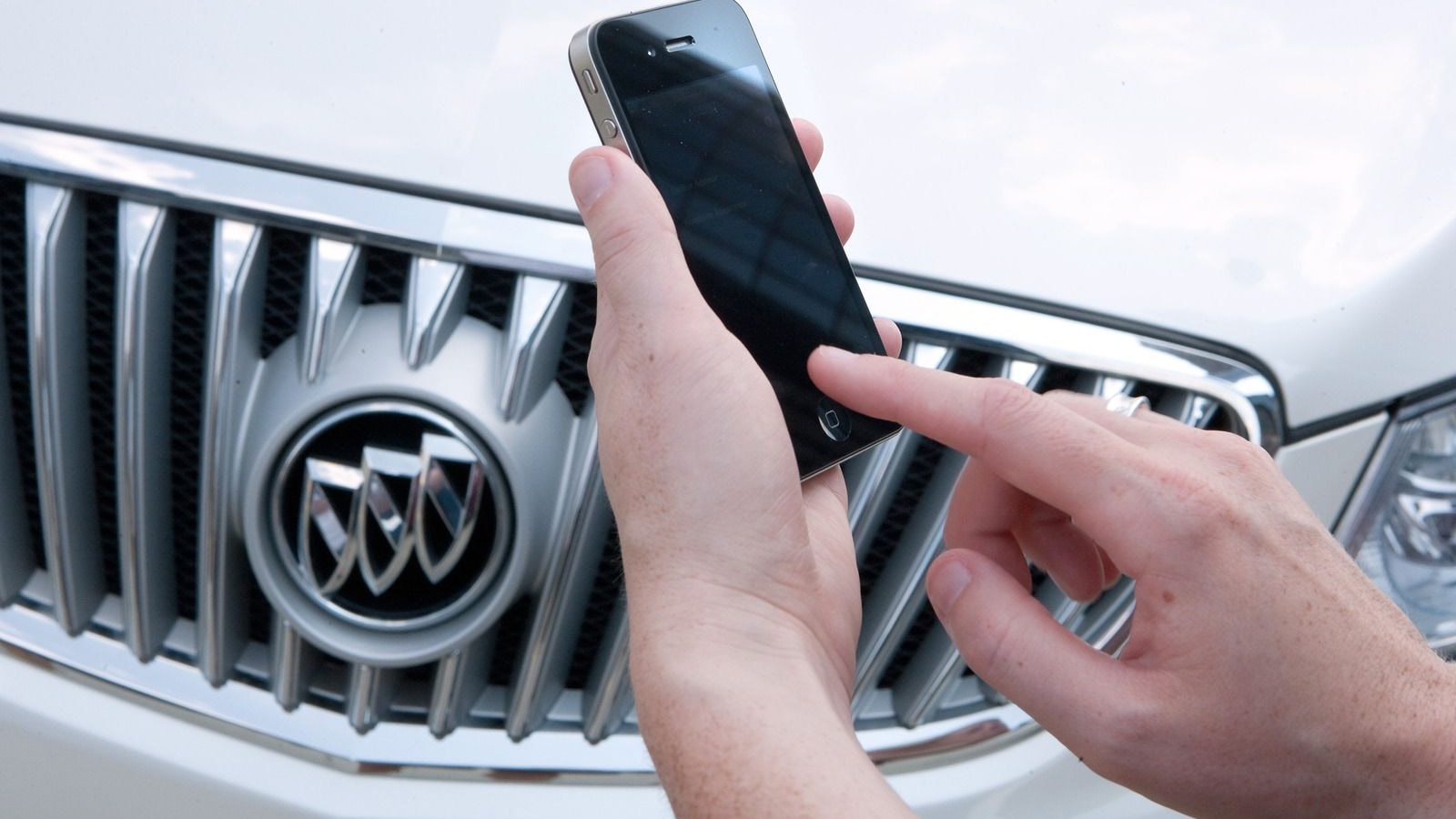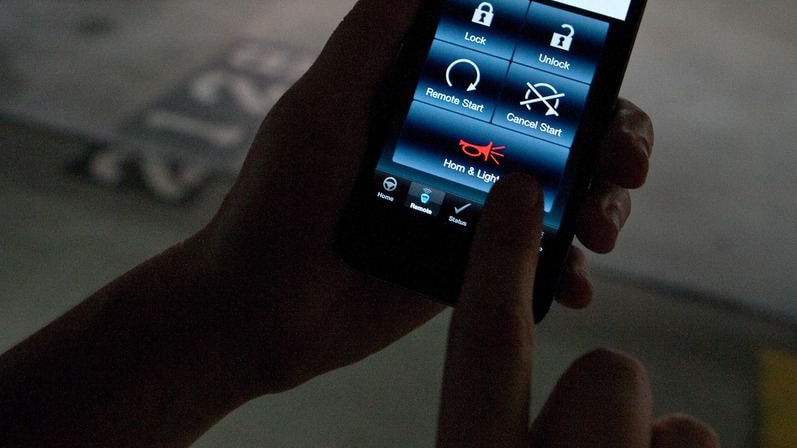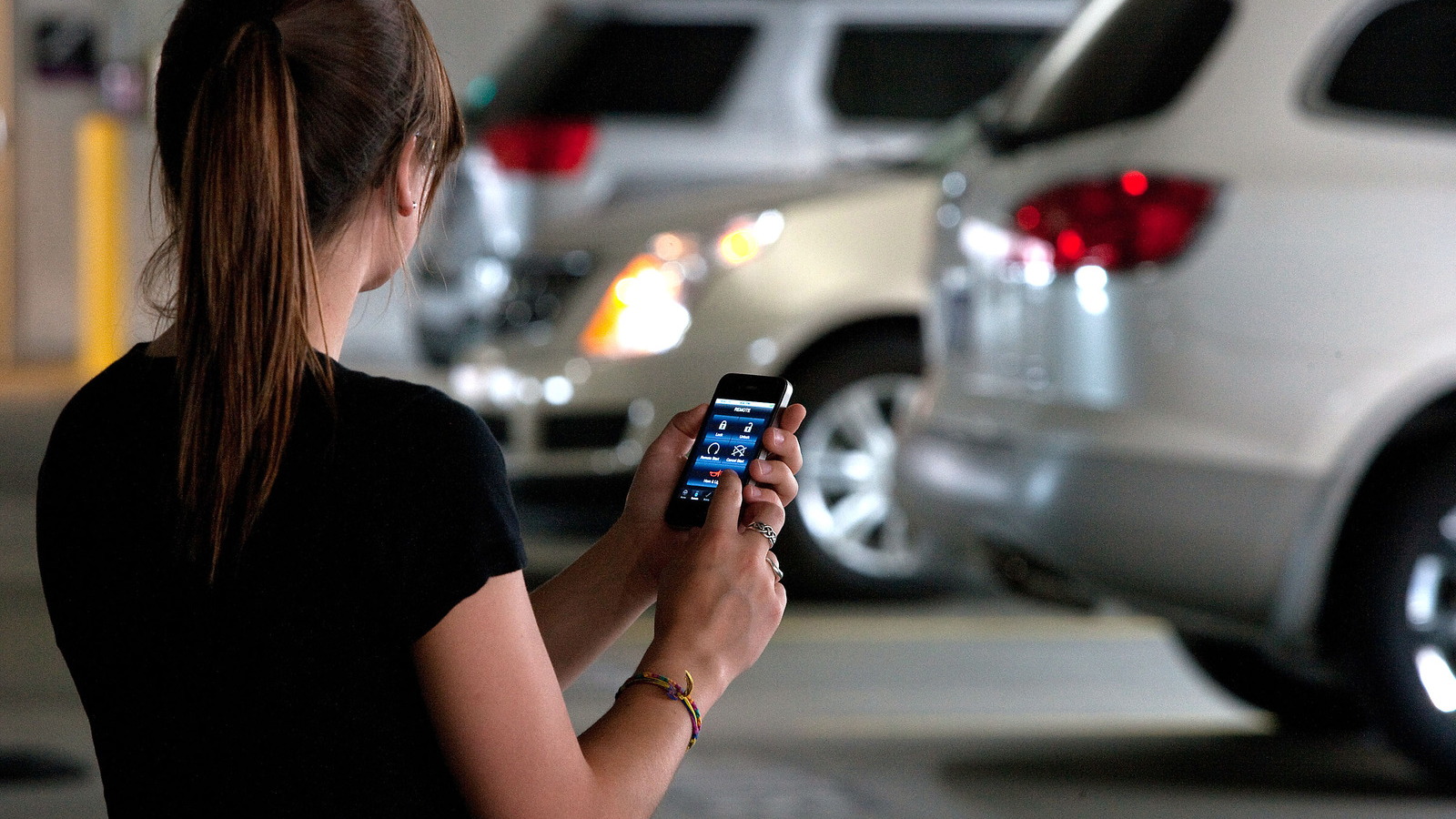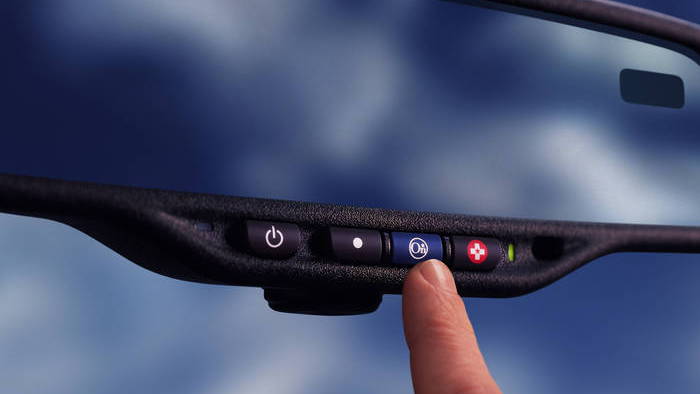Just yesterday AT&T and BMW announced their partnership for in-car cellular Web connectivity, but it's today's OnStar-Verizon prototype that's really proving to be interesting, if ephemeral. Why? Because the proposed tech allows things like Skype video chat, voice-to-text, vehicle and home monitoring from a smartphone, and more.
The advances in what the OnStar prototype can do with voice, video, and Internet access presented in the new OnStar prototype are huge. Ford's SYNC system is the only other in the U.S. market that has introduced such a massive feature set all at once--and OnStar, a General Motors company, would put SYNC to shame were it to incorporate all the functions of the prototype, to be displayed at CES this week fitted to a Buick LaCrosse.
A geek's fantasy
Key among the new services offered are voice-to-text and text-to-voice capabilities. Effectively translating speech into text means all manner of possibilities are opened: Web searches, text messages, status updates, vehicle controls all become possible with the right software. Likewise text-to-voice enables "safe" access--meaning eyes on the road--to written content from behind the wheel, including the same text messages, Facebook updates, and Google searches you just submitted by voice-to-text. Brilliant.
Pair the improved communication with Internet-based services and features with a pipeline of data broad enough to deliver rich multimedia content (Verizon's 4G LTE) and you have the ability to do things like video chat via Skype and search and display content from YouTube, both included in the OnStar prototype system. The car is starting to sound like a smartphone, isn't it?
Expand beyond these elements into smartphone and personal computer integration, and you're suddenly able to monitor live feeds of security cameras in your home from your car through the 4Home service. If you're not near your car you can monitor your car's immediate surroundings from its built-in cameras using your phone or computer. The system is even able to send live video of accident footage to a secure cloud-based server if an impact is detected, helping to identify the other driver--even in a hit-and-run.
Features like live traffic sound pale in comparison, until you include the live-cam images of congested areas displayed on the central display, allowing you to see a coming traffic jam before you're stuck in the middle of it.
Sand-in-your-face reality
Just as you've been lulled into a peaceful reverie by the warmth of so much techie goodness, there's OnStar president Chris Preuss to kick a dose of reality in your face. "While we haven’t decided yet which of these demonstration features OnStar will offer, or when, these prototype applications show just some of what’s possible...," Preuss said in the official release. That's right--none of these excellent features are planned for production at this point, and there's no time frame for anything like them to arrive. Bummer.
On the other hand, the second half of Preuss's statement may give a clue as to why things like this aren't possible in cars just yet: "Any new future services OnStar might offer will meet our high standards for safety--making sure that drivers’ hands are on the wheel and their eyes are on the road," said Preuss.
Driver inattention is a well-known and proven cause of accidents, injuries, and deaths. Providing a nearly endless series of attention-sapping stimuli, even through the hands-free use of voice, could be a recipe for disaster. On the other hand, getting devices out of our hands may improve the situation even as we gain more access. The intersection of automobiles and technology will continue to be a focal point for safety advocates and car buyers as more and more of what's in our pockets, on our desks, and in our backpacks becomes as integrated into our cars as it already is in our lives.
The official announcement can be found on page two. We'll be live at the 2011 Consumer Electronics Show (CES) through the rest of the week as well, so stay tuned for further details, images, and videos fresh from the floor.
[OnStar]
ONSTAR LEVERAGES THE VERIZON 4G LTE NETWORK TO DRIVE THE FUTURE OF IN-VEHICLE SERVICES
OnStar shows prototype applications for entertainment, communications and safety based on 4G LTE mobile broadband
LAS VEGAS, DETROIT and BASKING RIDGE, N.J. – From the 2011 International Consumer Electronics Show (CES), OnStar today unveiled a demonstration of prototype applications for what future in-vehicle entertainment, communications and safety could look like when taking advantage of the Verizon Wireless 4G LTE Mobile Broadband network.
OnStar has equipped a stationary Buick LaCrosse research vehicle to show these applications in the Verizon Wireless booth. Among the innovative services made possible by combining the power of OnStar with the speed of 4G:
- Vehicle monitoring. Cameras mounted throughout the interior and exterior of the car allow remote viewing of what is happening in and around your parked vehicle through a smart phone or PC.
- Impact detection. The research vehicle has the ability to send out live video to secure servers in the cloud from each of its six cameras placed around the exterior and interior of the vehicle. This is triggered by events around the car, or by an application on your smart phone. When an impact is detected, such as a parking lot fender-bender, the vehicle transmits a video clip – making it possible to identify offending drivers.
- Voice Portal. You can safely connect through voice commands to call up top social web sites such as YouTube, Twitter, Wikipedia and music with Verizon VCAST on the in-vehicle display.
- Home monitoring and control. Keep an eye on your home by connecting to security cameras in real time through the 4Home service. Control the thermostat, lights and other home systems from your vehicle – preset scenes allow you to condition your home when you leave, before you return, or when you’re leaving for an extended period of time.
- Electronic User’s Guide. Learn how to operate and maintain your vehicle through videos streamed on demand to the in vehicle display.
- Video chat. Make a video call using Skype to connect with family, friends or colleagues.
- Traffic view. A voice-operated navigation system goes beyond calculating the best route by displaying live traffic-cam images from TrafficLand to spot congestion before you get stuck in a back-up.
The Verizon Wireless 4G LTE Mobile Broadband network, launched in December 2010, is the fastest, largest and most advanced network in the United States, providing speeds 10 times faster than existing 3G networks. Verizon Wireless’ 4G LTE Mobile Broadband network currently reaches one-third of all Americans, with plans to expand the network to the company’s entire coverage area over the next three years.
OnStar’s prototype applications are the result of collaboration with Verizon Wireless’ LTE Innovation Center. The LTE Innovation Center, established in 2008, provides an environment for diverse companies to work together to develop innovative products that leverage 4G LTE technology.
OnStar’s Buick LaCrosse research vehicle will be highlighted from Jan. 6 – 9 in Verizon Wireless’ CES booth (#35216 in the South Hall of the Las Vegas Convention Center).
Companies OnStar collaborated with on this research project include Skype (www.skype.com), Trafficland (www.trafficland.com), and 4Home (www.4home.com). For more information about OnStar, visit www.onstar.com. For more information about the LTE Innovation Center and Verizon Wireless’ 4G LTE network, visit www.verizonwireless.com/lte.
onstar LeVerages the verizon wireless 4G LTE NETWORK to drive the future of in-vehicle services
OnStar shows prototype applications for entertainment, communications and safety based on 4G LTE mobile broadband
LAS VEGAS, DETROIT and BASKING RIDGE, N.J. – From the 2011 International Consumer Electronics Show (CES), OnStar today unveiled a demonstration of prototype applications for what future in-vehicle entertainment, communications and safety could look like when taking advantage of the Verizon Wireless 4G LTE Mobile Broadband network.
OnStar has equipped a stationary Buick LaCrosse research vehicle to show these applications in the Verizon Wireless booth. Among the innovative services made possible by combining the power of OnStar with the speed of 4G:
-
Vehicle monitoring. Cameras mounted throughout the interior and exterior of the car allow remote viewing of what is happening in and around your parked vehicle through a smart phone or PC.
-
Impact detection. The research vehicle has the ability to send out live video to secure servers in the cloud from each of its six cameras placed around the exterior and interior of the vehicle. This is triggered by events around the car, or by an application on your smart phone. When an impact is detected, such as a parking lot fender-bender, the vehicle transmits a video clip – making it possible to identify offending drivers.
-
Voice Portal. You can safely connect through voice commands to call up top social web sites such as YouTube, Twitter, Wikipedia and music with Verizon VCAST on the in-vehicle display.
-
Home monitoring and control. Keep an eye on your home by connecting to security cameras in real time through the 4Home service. Control the thermostat, lights and other home systems from your vehicle – preset scenes allow you to condition your home when you leave, before you return, or when you’re leaving for an extended period of time.
-
Electronic User’s Guide. Learn how to operate and maintain your vehicle through videos streamed on demand to the in vehicle display.
-
Video chat. Make a video call using Skype to connect with family, friends or colleagues.
-
Traffic view. A voice-operated navigation system goes beyond calculating the best route by displaying live traffic-cam images from TrafficLand to spot congestion before you get stuck in a back-up.
“The true broadband speed of the Verizon Wireless 4G LTE network gives our engineers the freedom to re-imagine the world of connected in-vehicle services of the future,” said OnStar President Chris Preuss. “While we haven’t decided yet which of these demonstration features OnStar will offer, or when, these prototype applications show just some of what’s possible when we combine our 15 years experience in developing safe secure and leading edge connected mobility solutions with the speed and agility of Verizon Wireless’s 4G LTE network. Any new future services OnStar might offer will meet our high standards for safety – making sure that drivers’ hands are on the wheel and their eyes are on the road.”
The Verizon Wireless 4G LTE Mobile Broadband network, launched in December 2010, is the fastest, largest and most advanced network in the United States, providing speeds 10 times faster than existing 3G networks. Verizon Wireless’ 4G LTE Mobile Broadband network currently reaches one-third of all Americans, with plans to expand the network to the company’s entire coverage area over the next three years.
OnStar’s prototype applications are the result of collaboration with Verizon Wireless’ LTE Innovation Center. The LTE Innovation Center, established in 2008, provides an environment for diverse companies to work together to develop innovative products that leverage 4G LTE technology.
OnStar’s Buick LaCrosse research vehicle will be highlighted from Jan. 6 – 9 in Verizon Wireless’ CES booth (#35216 in the South Hall of the Las Vegas Convention Center).
Companies OnStar collaborated with on this research project include Skype (www.skype.com), Trafficland (www.trafficland.com), and 4Home (www.4home.com). For more information about OnStar, visit www.onstar.com. For more information about the LTE Innovation Center and Verizon Wireless’ 4G LTE network, visit www.verizonwireless.com/lte.
